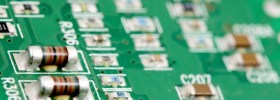Uncommunicative data refuses to come out of its silo – and boy can it be difficult.
As we all know, there are hundreds of benevolent IT developers who only want to do one thing – improve the world, one Internet working of Things at a time. Oh to be young and idealistic!
In a way, they are like parents – they want the best and they can see possibilities that the offspring can’t. Tragically the IoT cannot benefit from the wisdom of their experience. In part this is because it refuses to let them. Another major reason, it turns out, is that its data is dirty. That’s the finding of a new study by Harbor Research, which says developers are infuriated by the fact that the potential of their IoT projects – their babies – is being wasted.
Well what do you expect? The IoT, while no longer wet behind the ears, is still young. It has obviously entered a difficult stage in its development. It’s data is insecure, it won’t communicate and it doesn’t mix well, so it stays in its silo, being moody. Does this sound familiar? Do you recognize the tell tale symptoms that IoT data going through a painful phase of transformation?
Sadly there are no Agony Aunts for the technology industry, which leaves a gap in the service market that is yearning to be filled. If and when someone steps into the breach, I would hope they are sensitive to all our issues, and recognize the crossover between the technical and the emotional.
What sort of calls could our hypothetical problem lady – Dr Di Versity – expect?
This being a male dominated industry, we could safely assume that many of the callers would be frustrated with the behavior of their data. Doubtless some will moot the suggestion that the data needs to MAN up. But the idea of making data more metropolitan area network (MAN) friendly for older developers.
While Generation Xbox might like to be all ‘metro’, the veterans of mainframe and client server campaigns are likely to have a more brutal remedy. It might be pointed out that today’s generation of data is much bigger than it used to be in decades gone by. That can’t be healthy, especially for the circulation. The heart of the network will inevitably clogged by the cholesterol that is the modern video file, which arguably has no real nutritional value anyway.
Any moody data should be forced into a field, have its haircut and pressed into some sort of national service, older developers might say. They are more likely to argue that the teenage IoT needs a good kick up the assets.
This, as our agony aunt would point out, is wrong in so many ways. Today’s data is much more informed and is much more likely to be receptive to open sources. In fact, unlike previous generations, today’s silos are liable to communicate information through multiple languages, with Java the most popular, as the preferred method of server conversations in 55% of the survey group. PHP (17%) and Node.js (12%) were the next popular and 40% of the sample group takes the precaution of always using a Rapid Application Development (RAD) tool. That is a significant shift from traditional development approaches.
There are more operating systems for the teenage IoT to get its head around too. They see Android as the best operating system (OS) for building apps for IoT devices (29%), followed by Windows (24%), Linux (21%) and iOS (16%).
The development of today’s young IoT is so different from what seemed normal in previous generations, so we should remain patient, according to the company that commissioned the study, app development company Progress.
Developers may be cutting their teeth on different things at first – like smart homes (19%), wearables (13%) and sports (11%) – but that primary market schooling will lead to better things. According to Progress, there is evidence that the IoT’s senior years will be spent on more grown up stuff like healthcare (14%), smart city (13%) and automotives (12%).
“Developers just need the right technology tools,” says Progress MD Mark Armstrong. Then they can reach their full potential. But developers all agree that today’s IoT data needs a bit of love, in the form of security and privacy and protection from malicious attack. The returns will eventually come and they will be worth waiting for.









